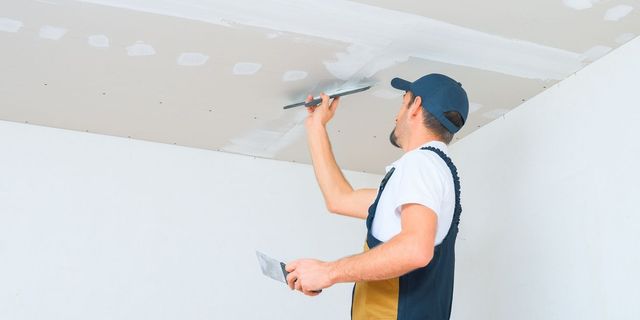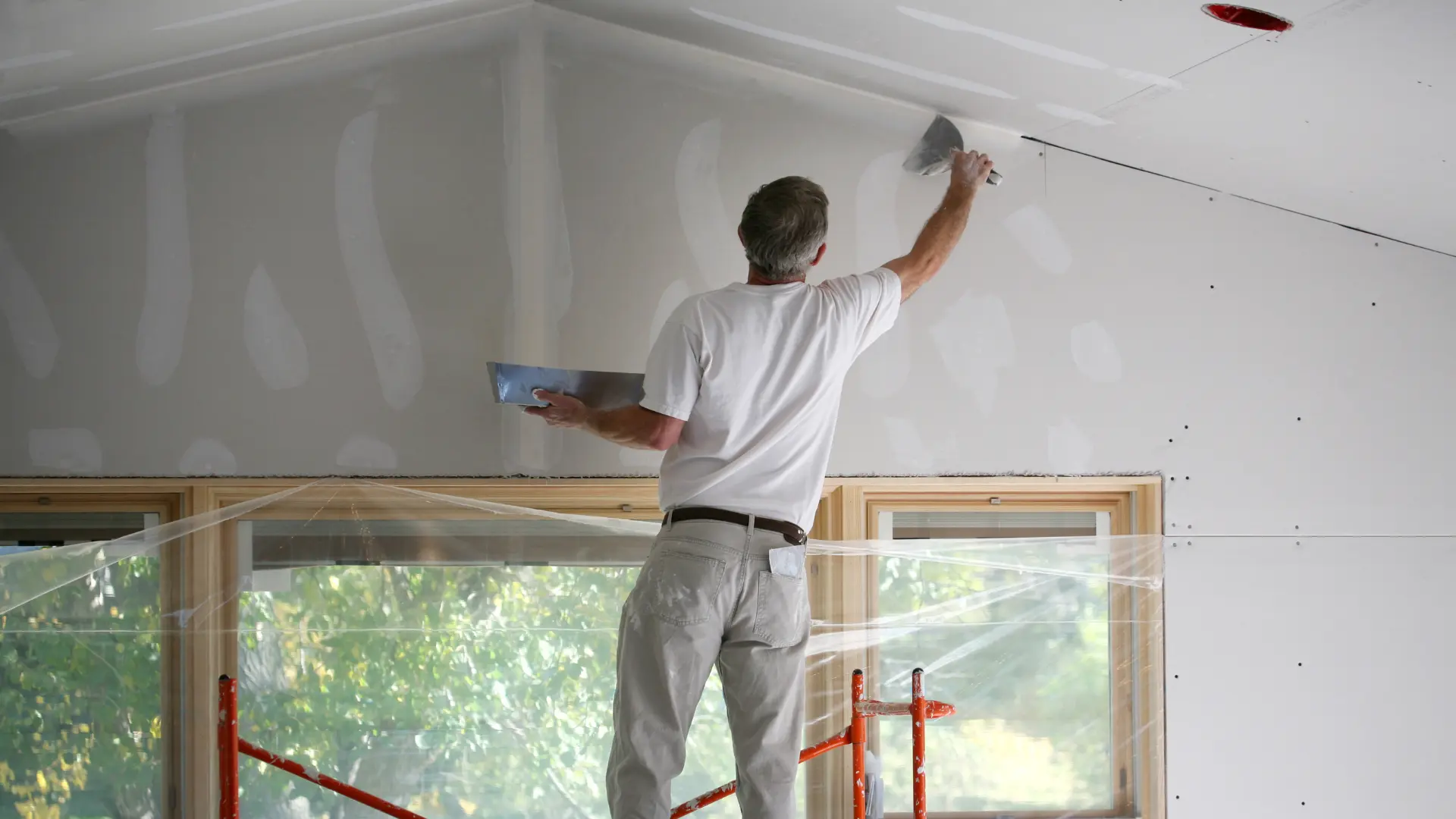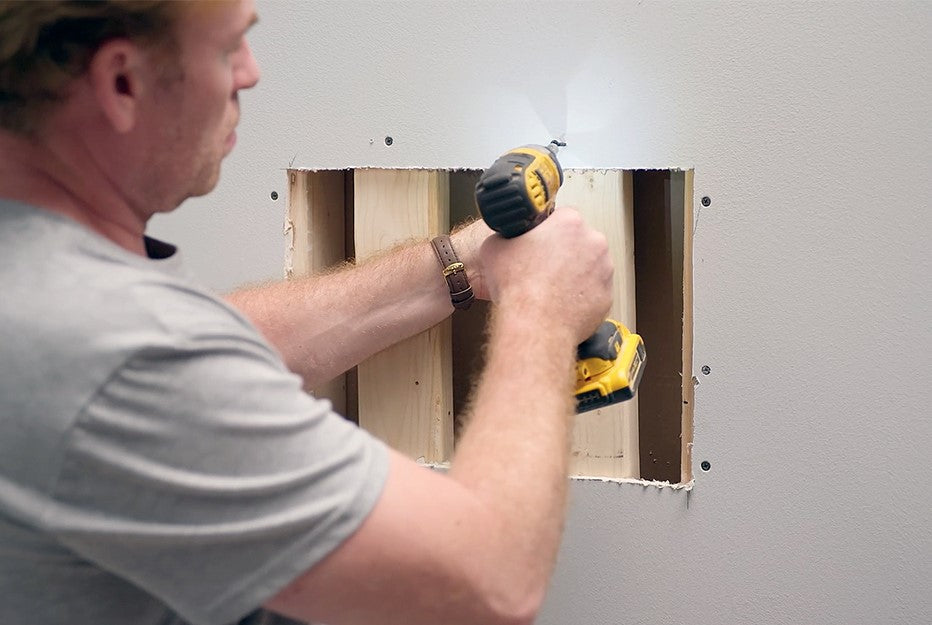Step-by-Step Approaches to Getting Flawless Drywall Repair Service and Setup
Accomplishing flawless drywall fixing and setup needs an organized approach. It entails understanding the different kinds of drywall and the tools necessary for the job. Proper location prep work is vital prior to beginning any kind of job. Drywall Installation Ogden Utah. Each action, from covering holes to installing new sheets, needs attention to detail. The procedure doesn't end with setup; ending up strategies are critical for a refined appearance. The following actions will ensure a smooth outcome, but exactly what do they entail?
Recognizing Drywall Types and Devices Needed

The installation tools are just as essential. An energy knife is essential for cutting drywall sheets, while a drywall saw can aid in making accurate cuts for outlets or components. T-squares ensure accurate measurements, and drywall screws or nails protect the panels to wall surface studs. In addition, a drywall lift can help with the installment of large sheets, lessening physical strain. Knowledge with these devices and types considerably adds to the efficiency and top quality of drywall projects.
Preparing the Area for Repair Service or Installment
Preparing the location for drywall repair service or setup is vital to ensure a smooth and effective procedure. The surrounding room must be removed of furniture and other barriers to give sufficient working space. This not just guarantees safety yet likewise protects against damage to possessions. Next, it is vital to cover the floor with decrease cloths to capture any kind of particles or dust created throughout the job.
In addition, the wall surfaces must be checked for any type of loose paint or wallpaper that might conflict with adhesion. Removing these components produces a tidy surface for the brand-new drywall. Before start, it is suggested to turn off power to electric outlets or fixtures in the vicinity. Guaranteeing ample lights in the office will better enhance visibility and emphasis throughout the repair or setup process. drywall contractor. By diligently preparing the area, one lays the groundwork for a successful drywall project
Step-by-Step Process for Patching Holes

Covering holes in drywall calls for a systematic technique to ensure a seamless repair. The very first step entails examining the size of the hole. For small holes, a patching substance might be enough, while bigger openings necessitate a spot. Next off, the broken area must be cleaned up and prepared by getting rid of any kind of loosened debris.
For tiny openings, applying spackling compound with a putty blade is advised, smoothing it over the opening and feathering the edges. As soon as completely dry, sanding the area guarantees a smooth coating. For bigger openings, a drywall spot must be cut to dimension, placed over the opening, and protected with screws. After setting up the patch, the exact same spackling procedure is repeated, followed by fining sand.
Ultimately, the patched area has to be primed and repainted to match the bordering wall surface. This thorough process assures a specialist appearance and prolongs the life-span of the repair service.
Installing New Drywall Sheets: A Comprehensive Guide
Installing brand-new drywall sheets requires cautious planning and implementation to assure a strong and visually appealing surface. Initially, the area must be gauged accurately to determine the variety of sheets needed. It is crucial to choose the appropriate thickness, normally 1/2-inch for interior wall surfaces and 5/8-inch for ceilings or fire-rated applications.
Next off, the studs or framework need to be examined for any type of abnormalities, making sure they are straightened and appropriately spaced. When positioning the drywall sheets, they ought to be placed flat to minimize joints and boost structural stability. A drywall lift can be advantageous for overhanging installations.
Securing the sheets with drywall screws at ideal intervals makes sure a safe and secure installation. It is very important to countersink the get more info screws a little listed below the surface area to prepare for the finishing process. Complying with these standards will certainly bring about a solid foundation, ready for the next steps in drywall completing.
Completing Touches: Insulation, Mudding, and Fining Sand Strategies
Once the drywall sheets are securely secured, the emphasis moves to the complements that will certainly supply a sleek look. This procedure starts with taping, utilizing either paper or fiberglass mesh tape to cover the joints in between sheets. The tape ensures a smooth shift, reducing the threat of splitting. Complying with taping, mudding is important; a joint compound is applied over the tape to load voids and produce a smooth surface area. Usually, several coats are necessary, every one feathered out even more than the before reduce visibility.
After sufficient drying out time, fining sand is the final action in achieving a perfect surface. A fine-grit sandpaper is utilized to smooth the dried out substance, ensuring there are no bumps or blemishes. Focus to detail during this phase is significant, as it considerably affects the total appearance of the wall. Completion result ought to be an even, professional-looking surface area prepared for priming and painting.
Regularly Asked Inquiries
Just how Do I Select the Right Drywall Thickness for My Task?
To select the right drywall density, think about the project's objective, place, and structural needs. Requirement thicknesses consist of 1/2-inch for basic usage and 5/8-inch for fire-rated applications, making sure longevity and compliance with building regulations.

Can I Mount Drywall Over Existing Drywall?
Yes, mounting drywall over existing drywall is feasible. Nonetheless, it is essential to assure the underlying surface area is complimentary and safe and secure from damage. Correct attachment and factor to consider of density are imperative for an effective setup.
What Are the Ideal Practices for Drywall Disposal?
The finest practices for drywall disposal consist of recycling when feasible, using regional waste management solutions, and complying with standards for harmful materials if relevant. drywall contractor. Properly securing and labeling waste warranties compliance and safety and security during disposal
Just how Long Should I Wait On Mud to Dry Prior To Sanding?
Commonly, one ought to wait 24-hour for drywall mud to dry prior to fining sand. Drying out time can differ based on moisture and temperature, so checking for a company structure is recommended prior to continuing.
Are There Eco-Friendly Drywall Options Available?
Yes, environment-friendly drywall options are readily available. These choices commonly use recycled products, low-VOC adhesives, and lasting manufacturing methods, lowering ecological impact while giving efficient insulation and resilience for numerous building and renovation tasks.
An utility blade is important for reducing drywall sheets, while a drywall saw can help in making specific cuts for outlets or components. Preparing the area for drywall repair or installation is important to ensure a smooth and effective process. Patching holes in drywall requires a methodical technique to guarantee a smooth fixing. Mounting brand-new drywall sheets calls for cautious planning and execution to guarantee a aesthetically enticing and strong surface. Yes, mounting drywall over existing drywall is feasible.